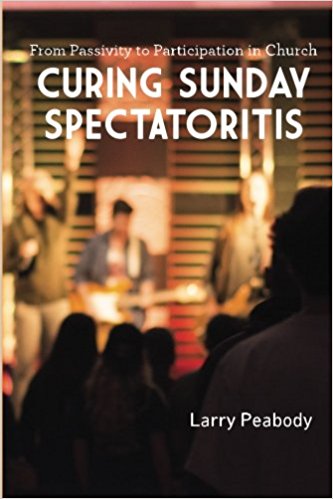Weaving Work-Truth into Church Life (Part Eight)
Help Believers Find and Serve Other Christians on the Job
This series of blogs explores how your local church can include God’s truth about daily work in the Sunday agenda. Part Eight describes the need for churches to help believers network with other Christians in their work circles. Links to previous articles in this series: (Part One) (Part Two) (Part Three) (Part Four) (Part Five) (Part Six) (Part Seven)
Look at the boss’s face. To call him unhappy is putting it far too mildly. Agitated comes closer. So, naturally, he has to spread the misery around. He calls in his top people and lays out what’s troubling him. Not only that, he demands that they unscramble what they know is an impossible enigma. When these, his best and brightest, try to explain that what the boss is asking for can’t be done, he accuses them of stalling, trying to buy time. The experts say it again—no one on planet earth could do what he asks. So the boss resorts to threats. “Do it, or heads will roll!”
Sound Familiar?
That situation is essentially what Daniel faces while working in the godless government of Babylon. Thoroughly shaken after waking up from a bad dream, the King calls in his top bureaucratic brass and commands them to do two things: first, tell him his dream and, second, explain what it means. They can’t. So he presses harder. When that doesn’t work, he threatens to execute all of them—including Daniel.
Talk about workplace stress! What does Daniel do? Well, he does not do what an old song urges Christians to do: “Dare to be a Daniel, dare to stand alone.” Daniel does not stand alone. Yes, he stands, but he stands together. He meets with three coworkers in his faith-family. They, too, have come under the death sentence pronounced by the angry King.
Faced with a crisis in their workplace, these four God-fearing young men, circle the wagons in prayer. God answers this unified group of believers, revealing to Daniel not only the dream itself but also what it means. Daniel and his friends put into practice words written hundreds of years earlier: “A cord of three strands is not quickly broken” (Eccl. 4:12). The strength of teaming up still holds true today. Especially for Christians representing King Jesus in the work world. In fact, life on the job in the 21st century may pose a far greater need to form faith-linkages than in any other era.
Contemporary Work Separates Christ-Followers.
Working believers in Old and New Testament times knew nothing of the modern forces that isolate those in today’s workplaces. The automobile and freeways now make it possible to live 50 miles or more from where we work. So those we meet with on Sundays are—during most weekdays—scattered and out of reach.
Specialization and technology separate us in other ways. Many jobs today did not exist even a decade ago. If you explain to me what you do Monday through Friday, your words—if I work in another field—may as well be Yiddish. “Neural forest. ” “Amygdala.” “Wireframe.” Such terms, clear to insiders, mean nothing to anyone else. The upshot of all this: Christians in the workplace are hard-pressed to connect with other believers who understand the lingo, dilemmas, and opportunities they face during the bulk of their waking hours.
Hundreds of miles separated Daniel and his friends from those back home who also worshiped the true God. These young men all worked for a pagan government and reported to officials who worshiped false gods. Far from home, Temple, priests, and any other faith-friendly backing, they banded together in a workplace support group that saw them through many puzzling employment challenges.
Ethical Dilemmas Call for Shared Wisdom
Let’s say you’re a young lawyer. You’ve just begun working for a law firm that encourages its attorneys to secretly gather information from social network profiles. As a believer, you’re not sure how to deal with your reservations about this practice. Or you’re a nurse who—just two hours ago—helped a patient, at his insistence, sign a do-not-resuscitate order. As he lapsed into unconsciousness, his wife screamed at you to “Do something!” You refused. But now you keep wondering, should you have listened to her? Or you’re a quality control engineer in a company contracted to develop the programming for an experimental fighter plane. Even though the program has met all the specs, you know it needs far more extensive and time-consuming testing. When you say so, your bosses warn that the company will fold if it does not deliver the product right now. What should you do?
No pastor or church leader can possibly grasp all the nuances of what Christ-followers face in their various roles in the work world. Public school teachers, pharmacists, and flight attendants all deal with different spiritual challenges on the job. In Center Church, Tim Keller writes, “Urban Christians are confronted with ethical and theological issues every day in the workplace. Preaching and ministry in urban churches must therefore help congregants to form networks of believers within their vocational field and assist them in working through the theological, ethical, and practical issues they face in their work.”
Your Church Can Equip Working Christians to Network
Daniel found three fellow believers near him on the job. But what are the chances today’s Christ-follower can find other believers at work? A few years ago I surveyed 60 working Christians. They came from urban, suburban, and rural churches. One survey question asked: “How many other believers are you aware of among those you interact with at work (coworkers, clients, customers, students, etc.)?” Ninety-seven percent knew of other Christians in their work circles. Nearly half could identify six or more.
Most jobs put Christians into contact with at least a few other believers. So, as part of its mission to make disciples, any church can urge its working members to find and serve other Christ-followers in their on-the-job networks. The first part of this teaching task will be to convince working Christians of the need to discover others on the job. This beyond-traditional teaching will emphasize the need to reach across denominational lines. Click here for an article on “How to Find Other Christians in Your Workplace.”
Question: After spotting fellow believers on the job, how can a Christian serve them? Answer: In all the ways the New Testament instructs us to practice one-anothering. Christians encountered on workdays are, after all, just much a part of Christ’s body as the church people we gather with on Sundays. One-anothering passages tell us to pray for, serve, spur on, accept, forgive, bear with, instruct, warn, and so on. Serving other Christ-followers can take place before and after clock-in time, on coffee breaks, over lunch hours, and on weekends. Teaching in the gathered church needs to make it clear that such non-programmed caring is real ministry and that Jesus expects it of his people who serve him out in the world’s workplaces.
The church of today, through visionary teaching, can counter the forces that isolate Christians in the work world. Doing so will equip those in the gathered church for whole-life discipleship. Then they will be able to “spur one another on toward love and good deeds” and to “encourage one another” (Heb. 10:24-25).
Daniel did.








































